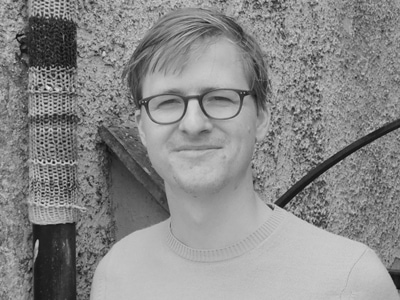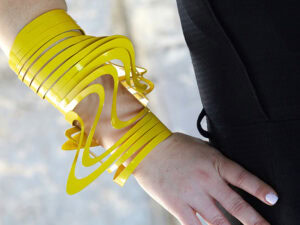My Mum gave me Georges Perec’s Life: A User’s Manual for Christmas 2011. Since then, the big wedge of paper has undergone material transformation, something Perec pays particular attention to within the book’s numerous and nebulous narratives. Tiny bits of torn paper bookmark pages that I have to return to; the thinly glued spine is broken in a couple of places; and the book is adorned, in the manner of a religious text, with a textile cover from the shop of the Victoria and Albert Museum—a reproduction of a Lewis F. Day Arts and Crafts print that shows acanthus leaves swirling around small fruit trees—another gift, given to me when I finished a teaching job.
Put simply, the book is about the inhabitants of one Parisian apartment block. But it is not so much about people as about their vast network of material residue: what they have acquired, produced, collected, bought, lost, made, organized, or found. Throughout, Perec includes curious pilcrows, changes of font, and text laid out in multiple formats, from signs, diagrams, and menus to advertisements and cartes de visite.

The structure of the narrative is shaped by the distribution of the occupants in the building. We start “On the Stairs,” and are led through the lives of the rooms’ occupants—from “Rorschach,” “Bartlebooth,” and “Altamont,” who have several chapters to their names interspersed throughout the book, to “Cinoc” and “Réol,” who only merit a couple of shorter passages. Dipping back into the bookmarked pages, I am reminded of the countless stories: from the artist Hutting’s experimental salons held on Tuesdays—a litany of faddish artistic experiments and happenings of which he eventually tired—to the system the antique dealer Madame Marcia uses to circulate her acquisitions from storage to display.
Two of the principal characters, the wealthy Englishman Bartlebooth and Winckler—“prodigiously clever with his hands” and a jeweler, too—are engaged in the most incredible durational art project. After learning watercolor from scratch from one of the other characters in the book (Valène), Bartlebooth travels the world and produces watercolors of seascapes (one every fortnight) that he sends to Winckler, who glues the composition, with a specially-made glue, to a thin wooden backing (poplar plywood) that he then cuts into a jigsaw puzzle of 750 pieces. When Bartlebooth returns to Paris, he starts to complete these puzzles (one every fortnight) in order to hand them back to Winckler to be “retexturised”: the jigsaw pieces glued back together and the reconstituted image removed from its wooden backing. The watercolor would then be taken back to where it was painted, dipped in detergent, revealing a blank piece of Whatman paper. Never fully realized, the tension between puzzle-maker and puzzle-solver is the most extraordinary leitmotif throughout the book.
The book has been a constant presence in my research. The silversmith Michael Rowe initially recommended it to me after my PhD upgrade exam at the Royal College of Art. I borrowed the book from the library and, like many readers coming across Perec’s work for the first time, I felt a little confused. By the time of my final PhD examination in 2012, I had my own copy, and used one of the tales in the book to kick off proceedings. The story of Herman Fugger, an amateur chef snubbed by the hosts of a big party despite his desire to contribute one of his own “delectable” treasures, seemed fitting for the research that challenged the marginal status of amateur craft practices.
On the colophon we read a line from Jules Verne—“Look with all your eyes, look.” Perec does so with skill, showing maker, writer, and thinker alike how we might engage with the material world with depth and flair.




